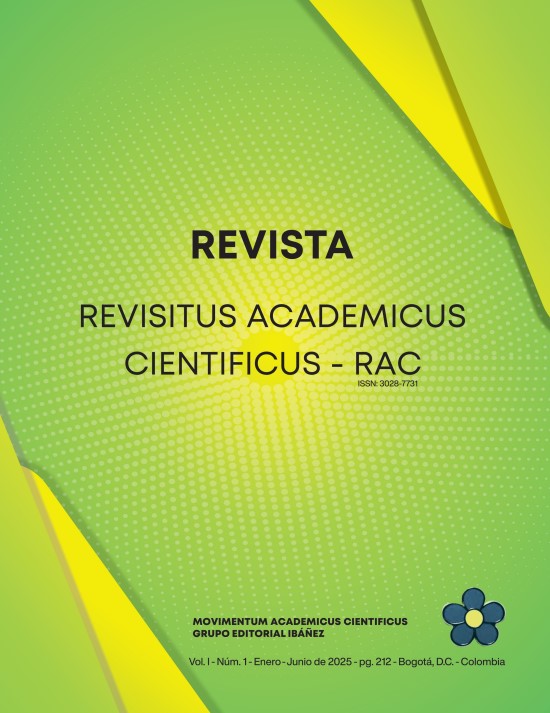Aggressiveness and social organization: a neuroscientific perspective on the deviant behavior of savannah baboons in africa
DOI:
https://doi.org/10.64304/rac.v1i1.5Keywords:
Baboons, stress, glucocorticoid, neurocriminology, criminalAbstract
The present research outcome makes a theoretical effort to interpret and identify the aggressive behavior of Savanna Baboons. To achieve this, it draws on a particular story described by neurologist and primatologist Robert Sapolsky in his research in Africa, titled A Lesson for Humanity.
Based on this introduction, the study begins a theoretical analysis of the deviant behavior exhibited by baboons, who, in addition to attacking their group members, tend to use sexual intimidation toward females as a persistent factor in sexual reproduction.
Thirdly, the role of stress (hormonal release of glucocorticoids) in aggressive behaviors will be examined. Finally, from a neuroscientific and neurocriminological perspective, the study explores how chronic stress, in a similar manner to humans, ultimately influences potential criminal behavior, especially when experienced during early childhood. This is due to the excessive production of glucocorticoids, which impacts the abnormal formation of the frontal lobe, increases the size of the amygdala, and affects dopaminergic receptors.
Downloads
References
Álvarez, M. & Villalobos, V. (2024). Interacciones sociopositivas y socionegativas entre Papio hamadryas machos y hembras en condiciones de cautiverio en el Zoológico Nacional. Universidad Metropolitana de Ciencias de la Educación.
King, A. J. & Marshall, H. H. (2022). Optimal foraging. Current Biology, 32, R589–R683. DOI: https://doi.org/10.1016/j.cub.2022.04.072
Baniel, A., Cowlishaw, G. & Huchard, E. (2017). Male Violence and Sexual Intimidation in a Wild Primate Society. Current Biology, 27, 2163–2168. https://doi.org/10.1016/j.cub.2017.06.013 DOI: https://doi.org/10.1016/j.cub.2017.06.013
Camón, L. (2021). Los babuinos hippies. Revista Natural Mind. https://www.mncn.csic.es/sites/default/files/2021-09/11_babuinos.pdf
Cheney, D. & Seyfarth, R. (2007). Baboon Metaphysics. University of Chicago Press. DOI: https://doi.org/10.7208/chicago/9780226102429.001.0001
Damasio, A. (2011). El error de Descartes. La emoción, la razón y el cerebro humano. Editorial Destino.
DeVore, I. & Washburn, S. L. (1963). Baboons’ ecology and human evolution. In F. Clark Howell & F. Bourliere (Eds.), African ecology and human evolution. Methuen.
Duval, F., González, F. & Rabia, H. (2010). Neurobiology of stress. Revista Chilena de Neuro-Psiquiatría, 48(4). http://dx.doi.org/10.4067/S0717-92272010000500006 DOI: https://doi.org/10.4067/S0717-92272010000500006
Evans, K., Swedell, L. & Chowdhury, S. (2022). Respect for males amid suppression of females. Journal of Human Evolution, 165, 103151. DOI: https://doi.org/10.1016/j.jhevol.2022.103151
Foucault, M. (2001). Un diálogo sobre el poder y otras conversaciones. Alianza Editorial.
Gallup. (2024). State of the Global Workplace. https://www.gallup.com/workplace/state-of-the-global-workplace-2024-key-insights.pdf
Gesquiere, L. H. et al. (2011). Life at the top: rank and stress in wild male baboons. Science, 333(6040), 357–360. https://doi.org/10.1126/science.1207120
Gilbert, C. C. et al. (2015). Papio Cranium from the Hominin-Bearing Site of Malapa. PLoS ONE, 10(8), e0133361. https://doi.org/10.1371/journal.pone.0133361 DOI: https://doi.org/10.1371/journal.pone.0133361
Greene, R. (2001). El arte de la seducción. Editorial Océano.
Kopp, G. H. et al. (2014). Out of Africa, but how and when? The case of hamadryas baboons. Journal of Human Evolution, 76, 154–174. http://dx.doi.org/10.1016/j.jhevol.2014.08.003 DOI: https://doi.org/10.1016/j.jhevol.2014.08.003
Hamilton, L. D., Rellini, A. H. & Meston, C. M. (2008). Cortisol, sexual arousal, and affect in response to sexual stimuli. Journal of Sexual Medicine, 5, 2111. https://doi.org/10.1111/j.1743-6109.2008.00922.x DOI: https://doi.org/10.1111/j.1743-6109.2008.00922.x
Hamburgo, D. (1972). Aggressive Behavior of chimpanzees and baboons in natural habitats. Walter Reed Army Institute of Research. DOI: https://doi.org/10.1016/B978-0-08-017007-7.50022-7
Holt, L. (1915). The care and feeding of children. Appleton-Century.
Huertas, O. (2025). Discriminación y violencia por prejuicio en el conflicto armado en Colombia. Editorial Tirant lo Blanch.
Huertas Díaz, O., Manrique Molina, F. E. & Trujillo González, J. S. (2024). Derecho a la educación. En Ágora jurídica. Bogotá: Ibañez.
Jeffrey, R. et al. (2003). Right orbitofrontal tumor with pedophilia symptom. Archives of Neurology, 60(3), 347-440. https://doi.org/10.1001/archneur.60.3.437 DOI: https://doi.org/10.1001/archneur.60.3.437
Fischer, J. et al. (2017). Charting the neglected West: The social system of Guinea baboons. American Journal of Physical Anthropology, 162, 15–31. DOI: https://doi.org/10.1002/ajpa.23144
Kaku, M. (2014). El futuro de nuestra mente. Editorial Debate.
King, G. & Green, D. (2022). Baboon perspectives on early human ancestors. Editorial Board Member James F. O’Connel.
Gesquiere, L. R. et al. (2011). Life at the top: rank and stress in wild male baboons. Science, 333(6040), 357–360. https://doi.org/10.1126/science.1207120 DOI: https://doi.org/10.1126/science.1207120
Boë, L. J. et al. (2017). Protosistema vocal en el babuino. PLOS ONE, 12(1), e0169321. https://doi.org/10.1371/journal.pone.0169321 DOI: https://doi.org/10.1371/journal.pone.0169321
Patzelt, A. et al. (2014). Male tolerance and male-male bonds. Proceedings of the National Academy of Sciences. https://doi.org/10.1073/pnas.1405811111 DOI: https://doi.org/10.1073/pnas.1405811111
Posada, J. (2011). La relación trabajo-estrés laboral en los colombianos. CES Salud Pública, 2(1), 66-73. https://doi.org/10.21615/1449
Mc Marsh. (2023). Health on Demand 2023. https://www.mercer.com/health-on-demand-latam-2023.pdf
Naranjo, J. (1986). La función del bostezo en la comunicación social de un grupo de babuinos. Revista de Psicología Social, 1(2), 183-185. DOI: https://doi.org/10.1080/02134748.1986.10821554
Mbiydzenyuy, C. et al. (2024). Influence of stress on aggressive behavior and sexual function. Helion, 10. https://doi.org/10.1016/j.heliyon.2024.e27501 DOI: https://doi.org/10.1016/j.heliyon.2024.e27501
Naranjo Pereira, M. L. (2009). Una revisión teórica sobre el estrés en el ámbito educativo. Educación, 33(2), 171-190. DOI: https://doi.org/10.15517/revedu.v33i2.511
Nevin, R. (2007). Understanding international crime trends. Environmental Research, 104(3), 315-333. DOI: https://doi.org/10.1016/j.envres.2007.02.008
Sapolsky, R. (2004). Why zebras don’t get ulcers. Third Edition.
Sapolsky, R. (2011). The art of analyzing species. https://www.youtube.com/watch?v=V5ppphxHRQ0
Sapolsky, R. (2014). A primate’s memoir. Capitán Swing.
Stevens, V. (1997). Symposium: reproduction in baboons. Human Reproduction Update, 3(6), 533–540. https://doi.org/10.1093/humupd/3.6.533 DOI: https://doi.org/10.1093/humupd/3.6.533
Sapolsky, R. (2017). Compórtate. Capitán Swing Libros.
Sandi, C. (2013). Stress and cognition. Wiley Interdisciplinary Reviews: Cognitive Science, 4(3), 245–261. https://doi.org/10.1002/wcs.1222 DOI: https://doi.org/10.1002/wcs.1222
Swedell, L. (2005). Strategies of Sex and Survival in Female Hamadryas Baboons. Pearson.
Tralma, P. (2019). Análisis genético en babuinos del parque de Gorongosa. Universidad de Chile.
Tung, J. et al. (2012). Genetic effects on mating success in baboons. American Naturalist, 180(1), 113–129. https://doi.org/10.1086/665993 DOI: https://doi.org/10.1086/665993
Walsh, K. et al. (2012). Mechanisms underlying sexual violence exposure. Clinical Psychology: Science and Practice, 19, 260–275. https://doi.org/10.1111/cpsp.12004 DOI: https://doi.org/10.1111/cpsp.12004
Sánchez Cabrera, A. C. (2025). Comportamiento criminal y disociación del conflicto. Revisitus Academicus Cientificus, 1(1), 67–95.


 English
English
 Español (España)
Español (España)



